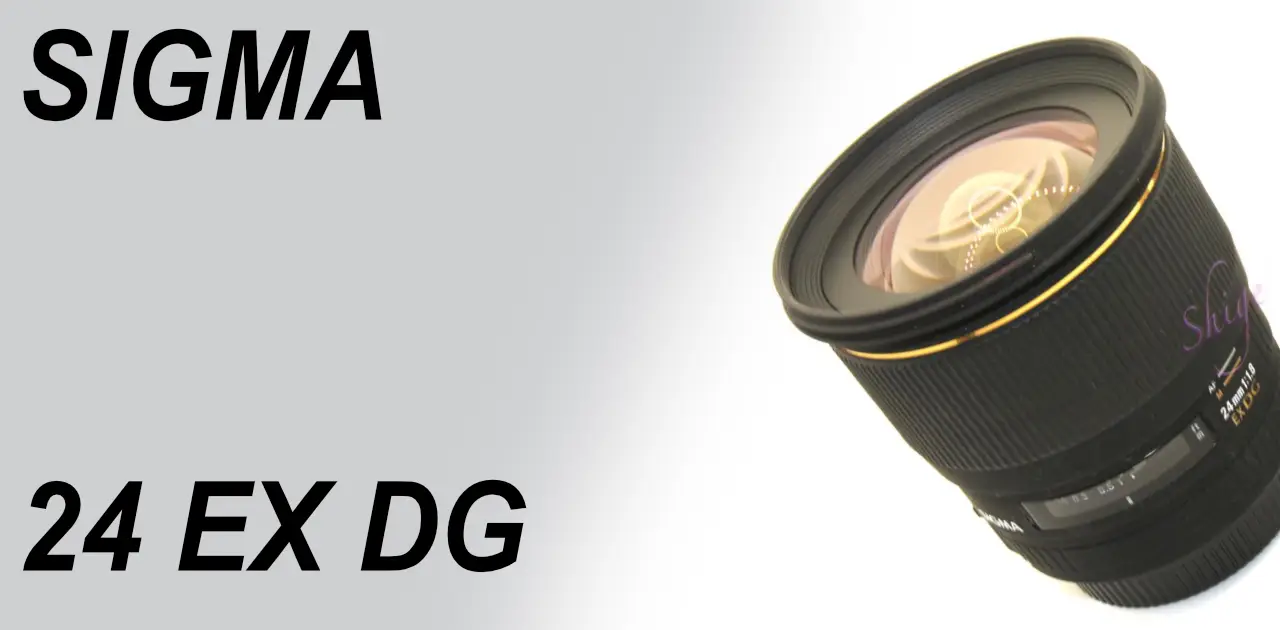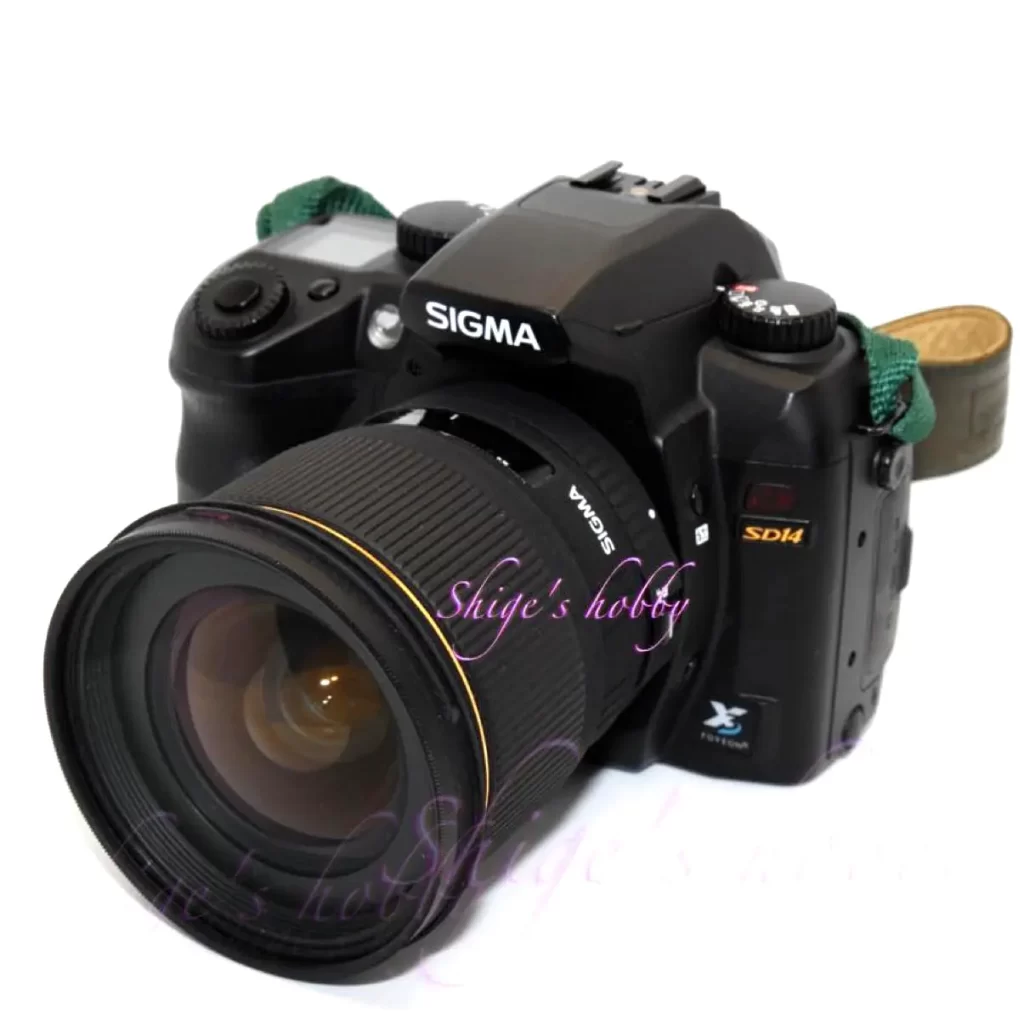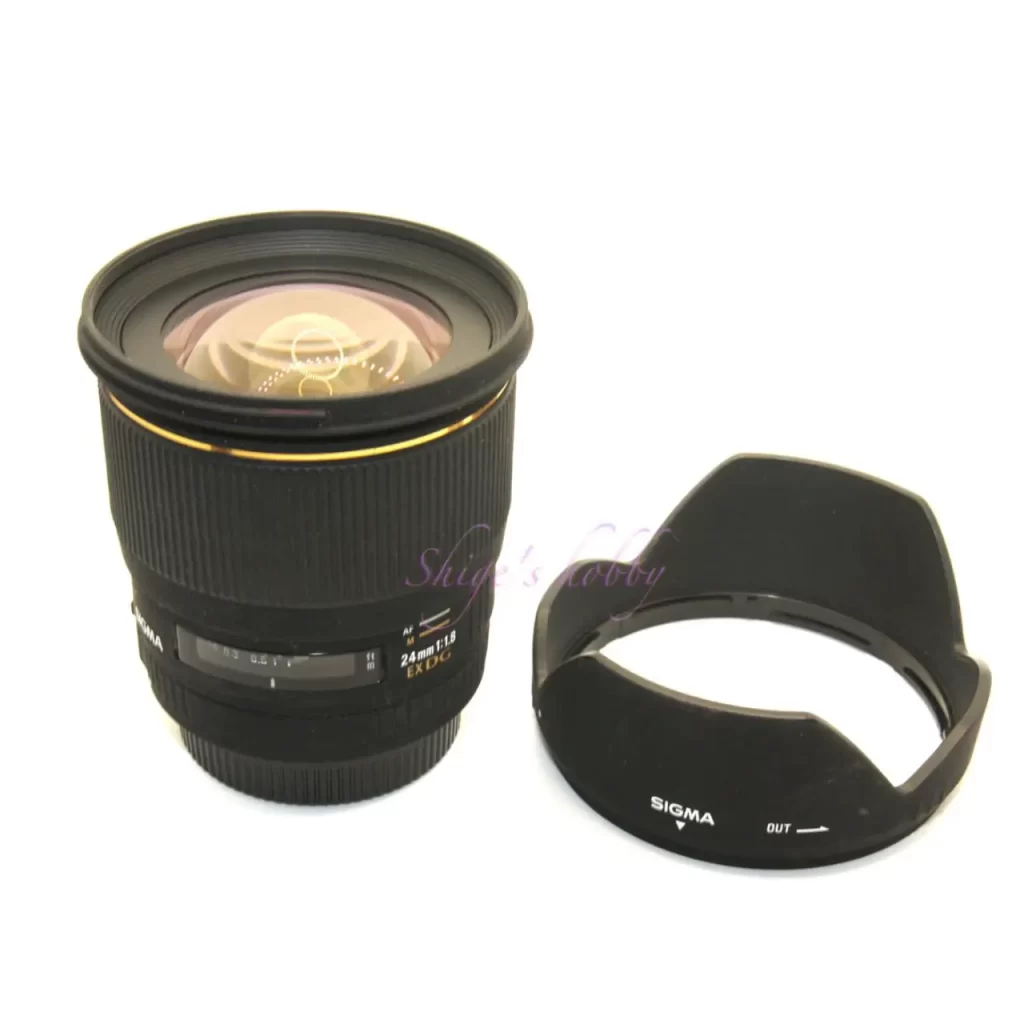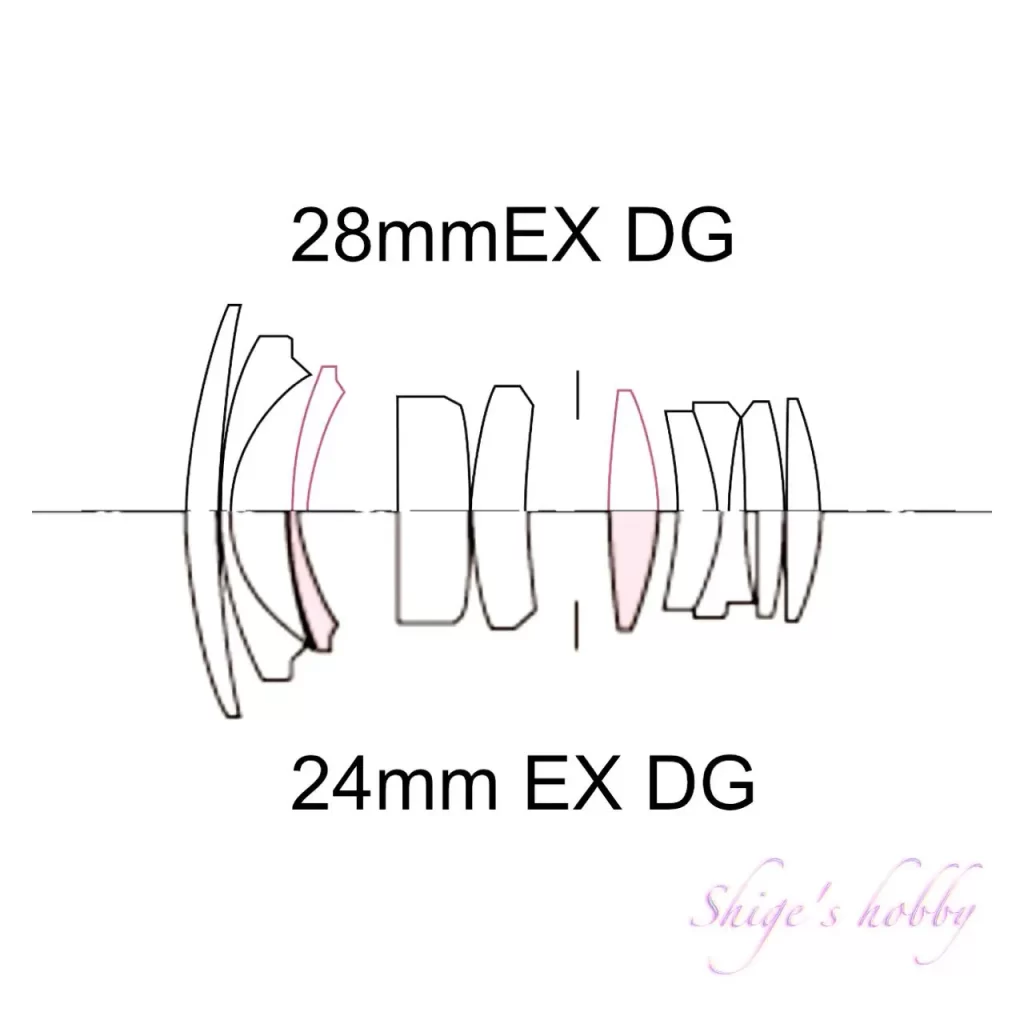SIGMA 24mm F1.8 EX DG

The second of the three wide-angle lens brothers
A review and Photo example of the SIGMA 24mm F1.8 EX DG ASPHERICAL MACRO.
Table of contents
Gallery
- The example photo was taken using a SIGMA SD14.
Review


1.Overview
The SIGMA 24mm F1.8 EX DG was released in 1998 and is the second of Sigma’s three prime wide-angle lenses (28, 24, 20mm).
With an aperture value of F1.8, it falls into the category of large aperture lenses.
The lens is made up of 10 elements in 9 groups, with two aspherical lenses (4 surfaces).
The minimum shooting distance is 0.18m, and the lens extends slightly when focusing.
Accessories include a case and a flower-shaped hood (LH-825-03), and the list price is 60,000 yen (excluding tax).
2.Usage
The 24mm F1.8 EX DG ASPHERICAL MACRO is the middle focal length of the three brothers, 20mm/24mm/28mm, so it can be called the second son.
This lens has been around since the film camera era before the digital camera Sigma SD9.
It has some problems with the periphery on full-size sensors, but with cameras with smaller sensor sizes such as SD9, SD10, SD14, SD15, SD1, and SD Quattro, the image is less likely to show noticeable defects, but since it is used in a cropped state equivalent to about 40mm, it loses its wide-angle lens feel and becomes closer to a standard lens.
I bought this lens when I bought the SD14 in 2022, and although it is a little less bright than the large Art lenses of 2024 (F1.4 → F1.8), it is compact and a good size for casual shooting around town. Sigma lenses from this era do not have good resistance to backlight, so a hood is essential.
It is a 24mm wide-angle prime lens with a minimum shooting distance of 18cm, allowing you to get close to the subject.
3.Add info.
As you can see in the table below, the 24mm and 28mm have the same lens configuration and barrel size, but the 24mm has a focal length 4mm wider and a minimum shooting distance 0.02m shorter. These conditions make it clear that the design prioritized cost reduction, and the diagram below shows that the lens thickness and lens position were adjusted to create the difference without drastic lens changes. The ingenuity used to create the two lenses makes lens design interesting.
As of April 2024, when you look at the 24mm EX DG on the information page for discontinued lenses on the official Sigma website in the reference link, the lens configuration diagram is the same as that of the 20mm, which has 11 groups and 13 elements, which is incorrect.
There are also descriptions that mix NIKON-F mount values and SIGMA-SA mount values for lens dimensions and weight, so the information in the table below has been selected to be the SA mount values.
Regarding the lens configuration diagram, the Sigma Taiwan website had the correct lens configuration diagram for the 24mm EX DG, so I have included a diagram below that can be compared with the 28mm EX DG. The diagram on the Taiwanese webpage has low resolution, so the lines are thick. No re-tracing was done to make the line width uniform.

The 20mm is thought to share the same basic parts as the 24mm and 28mm, such as the focus ring, but as expected, the 20mm focal length could not be achieved using the same techniques as the 24mm, so the lens configuration has been increased to 13 elements in 11 groups, the front lens has been enlarged, and the filter size has been increased. Therefore, it is thought that usable parts have been reused and new parts have been used.
The 20mm, 24mm, and 28mm focal lengths have been absorbed by zoom lenses for APS-C sensor lenses, but they were popular due to their low price, lens brightness, macro close-up, and better aberration correction than zoom lenses. I have fond memories of talking about which of the three focal lengths I preferred on a Sigma user message board.
It is a lens that has a fairly long life, released in 2001, and new ones should have been available until the late 2010s.
The lens used in the introduction is a later model with a single vertical knurl on the focus ring. Lenses with small longitudinal divisions on the focus ring are earlier models.
The lens configuration is the same between the early and later models, but it is unclear whether there were any changes other than the design of the lens barrel.
Specification
| focal length(mm) | 20 | 24 | 28 |
| Maximum aperture | 1.8 | ← | ← |
| Minimum aperture | 22 | ← | ← |
| Lens configuration | 11groups 13elements | 9groups 10elements | ← |
| Minimum distance(m) | 0.2 | 0.18 | 0.2 |
| Lens length(mm) SIGMA-SA (NIKON-F) | 87.0 (89.5) | 80 (82.5) | ← |
| Lens max diameter(mm) | 88.6 | 83.6 | ← |
| Filter diameter(mm) | 82 | 77 | ← |
| Weight(g) SIGMA-SA | 520 | 485 | 480 (500/official) |
| Price(Yen/No-tax) | 70,000Yen | 60,000Yen | 50,000Yen |
The numbers are quoted from yodobashi.com and SIGAM’s official page, and are based on values that the author believes are correct.
Reference links
- SIGMA 24mm F1.8 EX DG ASPHERICAL MACRO
- SIGMA 20mm F1.8 EX DG ASPHERICAL MACRO
- SIGMA 28mm F1.8 EX DG ASPHERICAL MACRO
- SIGMA Super-Wide II 24mm F2.8
- SIGMA SD14 / SD15
Update
- 2024.12.19
- 2024.04.13
- 2023.02.01
Affiliate link
- Please see the disclaimer regarding advertising here.
- Italicized links in the text are advertisement links that take you to other sites.

Leave a Reply